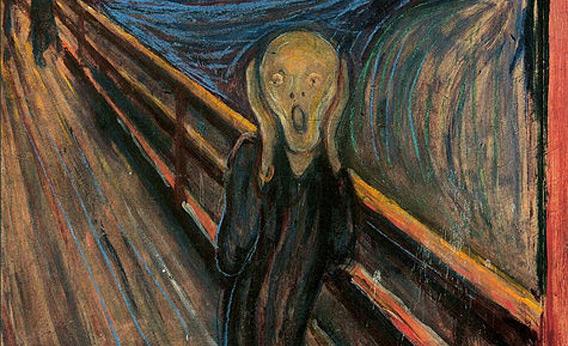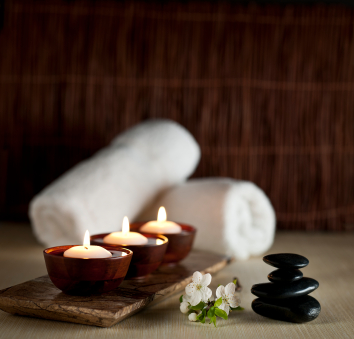Monday Musings: The More Things Change
The Scream. Edvard Munch 1895.
The ‘Change.’ A time for ‘hysteria.’
I kid you not.
All joking aside, if you trace the history of the menopause, it has long been associated with loss, decline and decay, something is abhorred and shunned in society. And as I wrote earlier this year, in “response, marketers and the media have perpetuated and pathologized what author Louise Foxcroft (in her book, ‘Hot Flushes, Cold Science’) refers to as “one more feature in a woman’s linear life history, an inevitable and natural phenomenon, one more thing to negotiate and nowhere near as astonishing or potentially problematic as pregnancy.”
Even the British Medical Journal has been in the game, publishing a piece in 1937 that highlights how profound an impact the ‘Change’ can have a woman’s ability to function:
“Practically every menopausal woman becomes aware of certain mental clumsiness, an inability to cope with the ordinary problems of daily life, and a tendency to “give in.” The realization of her shortcomings is worrying, and she readily becomes depressed. Emotional instability is well defined, and the patient reacts to trivial situations with rather surprising attacks of laughter or tears. She is subject to rapid and frequent changes of mood: at one moment she will be unbearably irritable, at the next, pathetically contrite. There may be marked changes in personality and severe attacks of mental depression, sometimes lasting for days, during which the patient may become suicidal. A condition of hypochondriasis, which is particularly distressing to those around her, may develop out of the complicated syndrome, even in the milder cases, and persist for the remainder of the patient’s life.”
No wonder pharmaceutical manufacturers started pushing thorazine and benzadrine.
If wandering around in a drugged out state doesn’t calm you down or pep you up, the general 1937 approach might. In fact, I am of the mindset that modern medicine may need to take a page from 1927 clinician Dr. PMF Bishop:
“Assistance can be rendered by the members of the patient’s household. Her husband and relatives should be told that she is passing through a difficult phase of life and that they should therefore be tolerant and sympathetic in their dealings with her. She should be shielded as much as possible from domestic worries, and sometimes a holiday away from her household duties is beneficial, thought i may be harmful if she is a woman of forceful personality who will worry over the conduct of her home in her absence. She should be encouraged to pursue any hobby which will prevent her from becoming introspective about her condition. She may suffer from a secret fear that her symptoms are due to cancer, and it is wise for her doctor to reassure her specifically on this point.”
So, what is the point of my Monday musing? Menopause is still viewed as an hysterical condition in many circles. The trouble is, the recommended solution is HRT (mind you, even Dr. Bishop writes about estrogen replacement) and rarely do practitioners recommend that the woman simply take a long holiday away from the stressors of her mind and body. Relaxation can help; I’ve shown you the data on Flashfree time and again.
Just think if someone could put THAT in a bottle.
Read More
Midlife mishap: blurring the boundaries between work and home
Telecommuting is the new black, right?
Not so fast.
Researchers say that while telecommuting (i.e. working regularly but not exclusively at home) has gained traction in the American workplace, the foothold remains elusive and the proportion of workers with flexible work options has been essentially flat over the past decade and a half. Additionally, the number of hours that workers actually telecommute on a weekly basis is less than one full day, a mere six hours. Although the reasons for this are numerous, it appears that managers remain reluctant to relinquish supervisory control, even though on average, telecommuters work harder and longer than their colleagues who are tied to their office chairs.
Do the math: Fewer telecommuting hours still equates to longer working hours.
What this brings to mind is the potential impact that telecommuting has on our lives outside of work, especially when work takes place at home? And how does this impact in turn, affect stress, which of course, has been linked to worsening of menopausal symptoms such as weight gain, hot flashes and depression?
I have been working at home for 20 years now, having started a business in 1992. While I am not a telecommuter, I am very aware of the black hole that one can fall into and how that has affected my ability to shut it down after a certain time of day. This ability has grown more difficult the more connected the world is and I find that I am consistently interrupted by clients during gym workouts, breaks, early morning coffee reentries and late day ratchet down.
Data demonstrate that my experience is often the norm and not the exception.
Let’s take a look at what the research shows. Analyzing trends from two national data sources — the National Longitudinal Survey of Youth 1979 Panel and the U.S. Census Bureau’s Current Population Study — Sociology Professors Mary Noonen and Jennifer Glass from the University of Texas at Austin learned that while the number of weekly telecommuting hours is relatively modest (just 6 hours, per above), most of the 30% of respondents who work from home add at least five to seven hours to their work week. In fact, 50% to 67% of telecommuting hours reported in these surveys push work hours past the 40 hour workweek model and are essentially overtime work. Just think: if you feel that you are already pushed to the brim in the office and volley for work at home hours, you may actually be relocating hours but not eliminating them. Moreover, your employer may be raising his or her expectations not only of what you deliver but when, including evenings and weekends.
Study findings also show that there is a misconception that telecommuting is more prevalent among parents with dependent children. In fact, parents are not likelier than the general population to work from home; rather authority and status in the workplace appear to drive telecommuting hours.
The researchers note that “telecommuting is intrinsically linked to information technologies that facilitate 24/7 communication between clients, coworkers and supervisors [thereby] potentially increasing the penetration of work tasks into home time.” A 2008 Pew Study supports this contention, demonstrating that the majority of ‘wired workers’ use technology to perform work tasks, even while sick or on vacation.
The perils run deep when the boundaries become blurry between work and home. Moreover, over wired means overload, and the ability to shut off our brains becomes increasingly difficult. Adrenal fatigue may set in, where after prolonged periods of cortisol production overdrive, the adrenal glands can no longer keep up with outside stressors and the body’s demand to handle stress and protect the immune system. In turn, the ability to handle life stressors declines.
Do blurred boundaries yield diminishing returns, midlife mishaps, a mishmash of expectations?
What do you think?
Read More
Wednesday Bubble: I like big butts…
I cannot lie?
Okay, I don’t know if I aspire to ‘quite a spread’ but I am here to tell you that things could be worse. In fact, if you’ve ‘got back’ you may be healthier than some women.
It seems that a large derriere and thighs may actually extend your life. The reason? Researchers say that fat particles that end up in these areas help trap harmful fatty acids in our diet.
Although they are unsure of the exact reasons why, researchers do say that unlike abdominal fat, which has been linked to metabolic syndrome, lower body fat, i.e., fat that accumulates in the thighs and backside, has actually been confirmed to play a protective role in the body. And, it not only stores unhealthy fatty acids, but may also release harmful compounds more slowly than say, abdominal fat.
So if you’ve got back, are you in the clear to eat whatever you want? Not so fast. Even though your derriere offer a protective role, there are other reasons to eat and stay healthy – not only to maintain optimal cholesterol levels, but also to counteract some of the natural effects of declining estrogen, such as weakening bones.
(The study appeared in the January 12 online edition of the International Journal of Obesity.)
Read MoreJust breathe
Want to reduce the frequency of your flashes?
Just breathe.
I’m serious. Just as serious as Mayo Clinic researchers who recently published a study about paced breathing in the online version of Menopause. If you are unfamiliar with the term, paced breathing refers to slow, deep breathing from the diaphragm.
Although experts are still unclear as to the underlying cause of hot flashes, they believe that they are related to a dysfunction in a process called ‘thermoregulation;’ this is the ability to keep our body temperature in a steady state, even when the environment changes. A decrease in estrogen levels, coupled with increased activation of the sympathetic nervous system (which assists in controlling the body’s functions and the fight or flight mechanism) narrows the natural comfort zone and tolerance for temperature fluctuations. Voila! A flash is believed to be born.
So where does paced breathing fit in? Here’s the interesting part: paced breathing decreases the activity of the sympathetic nervous system. So, when the nervous system goes into overdrive, paced breathing can theoretically calm the waters. However, as we go through our busy lives, is regular paced breathing even feasible?
To find out, 105 women were provided with either audio recordings of chimes that paced their breathing or were asked to simply breathe normally. All of the women reported having at least 14 or more hot flashes a week, and they also a history of breast cancer. Women assigned to paced breathing were asked to use their audio recordings either once or twice a day and practice taking 6 breaths per minute for 15 minutes. The other women practiced regular breathing (14 breaths per minute) for 10 minutes a day. All of the women kept a daily hot flash diary.
Over nine weeks, women who practiced paced breathing twice a day reported reductions in daily hot flashes by 52%. Paced breathing practiced once a day reduced hot flashes by 42%. What’s more, women who didn’t slow their breathing deliberately but simply focused on it 10 minutes a day reduced the frequency of their hot flashes by 46%; this suggest that focusing can help alleviate symptoms and that some sort of placebo effect is at play. Still, other studies have similarly reported reductions in hot flash frequency by as much as 50% using progressive muscle relaxation which also has a positive effect on the nervous system. In fact, I just wrote about relaxation and flashes last week.
Most of the women found it challenging to fit 30 minutes of paced breathing into their day, which suggests that perhaps intensifying the effort once a day can provide the same beneficial results. For the most part, there was some initial dizziness but it was mostly mild and likely the result of significantly slowing breathing; more practice would probably help to ameliorate this effect.
It seems to me that it is possible to move away from drugs and towards the body and mind to balance our internal thermostats. The bottom line appears to be that a bit of effort can potentially a long way towards solving a problem that has long eluded the medical community.
Just breathe.
Read MoreThe Roundup: Fall News and Tidbits

[Credit: Special Thanks to artist Darryl Willison of Whimsicalwest.com Please visit his site and support his work.]
Wow! Can you believe that we have reached the last month of the year? I haven’t done a Roundup in some time so in case you’ve missed something, I’m selecting my Fall favs for your perusal.
Enjoy!
- Menophrenia? The Walking Dead have nothing on zombiepausal women. Welcome to the dark side of vintage advertising.
- HRT takes yet another hit. The U.S. Preventive Task Force says that hormone therapy will not protect you against chronic disease.
- Speak up! Women have plenty to say…except when it comes to corporate or governing bodies. It’s time to change that paradigm, don’t you think?
- Feeling Wheezy? What’s in your medicine cabinet? HRT may be worsening your asthma.
- I Put a Spell on You. If your flashing it out of control, you may want to see a hypnotist. That’s right; researchers say that hypnosis can significantly benefit number and severity of hot flashes.
- No Bones About It! Aging is part of the bone loss story. But what about your diet and the meds you take? Time to look closer and factors that may be influencing your skeleton.
Wednesday Bubble: Relax, just do it.
You think that hormones are the only solution to hot flashes?
Think again!
This is not the first time that I have reported that the mind-body connection is an important key to menopausal symptoms. Moreover, it probably won’t be the last. In fact, in a second study published within the past 18 months in Menopause journal, researchers are again moving away from hormones and moving towards applied relaxation. (A related study topic-wise can be found here.)
This time, Swedish researchers assigned 60 women in menopause to either ten sessions of group therapy combined with relaxation or to no intervention for three months. All of the women had been experiencing moderate to severe hot flashes at least 50 times a week. During the 10 group therapy relaxation sessions, the women were taught to methodically move through the body’s muscle groups and use breathing techniques to systematically relax each group. They were then provided with exercises to practice daily at home, with the the goal being to learn the relaxation method and self-manage their symptoms. During this period, all participants kept a regular hot flash diary and filled out a quality of life survey on three different occasions. They also provided the researchers with a sample of their saliva.
The findings? Women practicing daily relaxation and engaging in regular coaching sessions actually reduced their daily hot flash count from an average of 9.1 to 4.4 a day; that’s about a 50% reduction. In the group of women who had no interventions, a reduction in daily hot flashes was also observed but on average, these women experienced less than two fewer flashes a day; this is likely the result of what researchers consider a ‘placebo effect.’
More importantly, benefits of relaxation remained for at least three months after the study ended and the final therapy sessions. The women who practiced relaxation also reported improvements in overall wellbeing and quality of life, including sleep and memory. What’s more, saliva testing showed reductions in cortisol; as I’ve written previously, stress leads to cortisol release and ups the hot flashes ratio. Once that cycle starts, who knows how long the endless loop plays out?!
Time to stop the loop? Forget the drugs. Breathe deeply, exhale and repeat. Just do it.
Read More
Is a spa retreat the key to your soul’s estate?
(S)he enjoys true leisure who has time to improve his soul’s estate. – Henry David Thoreau
If you are anything like me, you’ve worked yourself to the nth degree and are in need of rejuvenation. After all, your soul’s estate is only as valuable as its upkeep, right? However, is there any proven benefits to a spa retreat beyond that incredible boost of endorphins that feed an overall sense of wellbeing?
Evidently, there really is! In fact, contrary to what many believe, newly-published research in Integrative Medicine suggests that the combination of caloric restriction, colonic therapy, meditation and yoga may provide the body with actual physiological benefits beyond the feeling of wellness. Mind you, certain practices like caloric restriction can be downright dangerous if not effectively carried out, reducing much needed vitamins and minerals, resulting in a loss of lean body mass and even taxing the heart. Colonic hydrotherapy, i.e. removing toxins from the intestines, has likewise been questioned, namely because there are few data to support claims of therapeutic benefit and without proper guidance, may result in nausea, vomiting, dehydration and electrolyte imbalance.
However, in this very small study of 15 healthy women and men, a one-week, intensive spa program that focused on three main areas – calories, toxins and stress management — yielded some surprising results. Roughly three to four days before a week at the spa, the participants switched out their normal eating habits for fruit, raw and steamed veggies, salads, juices and herbal teas, 2 tablespoon of olive oil at bedtime, 8 oz of prune juice every morning and laxative teas at night. They were also asked to avoid potatoes, bananas, all grains, pasta, meat, dairy, processed foods, caffeine and alcohol.
At the spa, all received at least four colonic treatments and did 800 calorie juice-fast cleanses (all herbal teas, veg/fruit juices, probiotics, digestive enzymes, herbal laxatives, olive oil, vegetarian liquid protein supplements, vegetarian soup and water with lemon). They also participated in daily structured meditation and yoga programs as well as personal meditation to boost deep breathing, heightened awareness and calm.
The findings? Clearly, all participants dropped weight, which is to be well expected from caloric restriction; this weight loss averaged about 7 pounds. Likewise, there was expected decrease in blood pressure. Blood fat levels, namely total cholesterol, also benefitted, and levels of mercury declined in some participants, which supports the hypothesis that this type of program can help clear the body of certain toxins. Not surprisingly, the researchers also noted a significant decrease in stress, depression and anxiety and saw improvements in anger levels, tension and fatigue. Spirituality scores also improved, probably as a result of meditation and the group appeared to be more intensely unified than before the spa visit.
Researchers say that while the study is quite small, it appears that intensive spa programs may have some real benefits. One thing to note is that the participants experienced changes in sodium and chloride levels. This indicates that some of these interventions do affect electrolyte levels and therefore, can be risky in people who are predisposed to imbalances or on certain medications like diuretics. The researchers also recommend that before participating in ‘extreme spa,’ that you have a complete physical to insure that your body is up to the task.
Extreme spa or gentle spa that focuses on health, balance and internal (re)connection. All may hold the key to estate management. Your soul will thank you!
Read More










